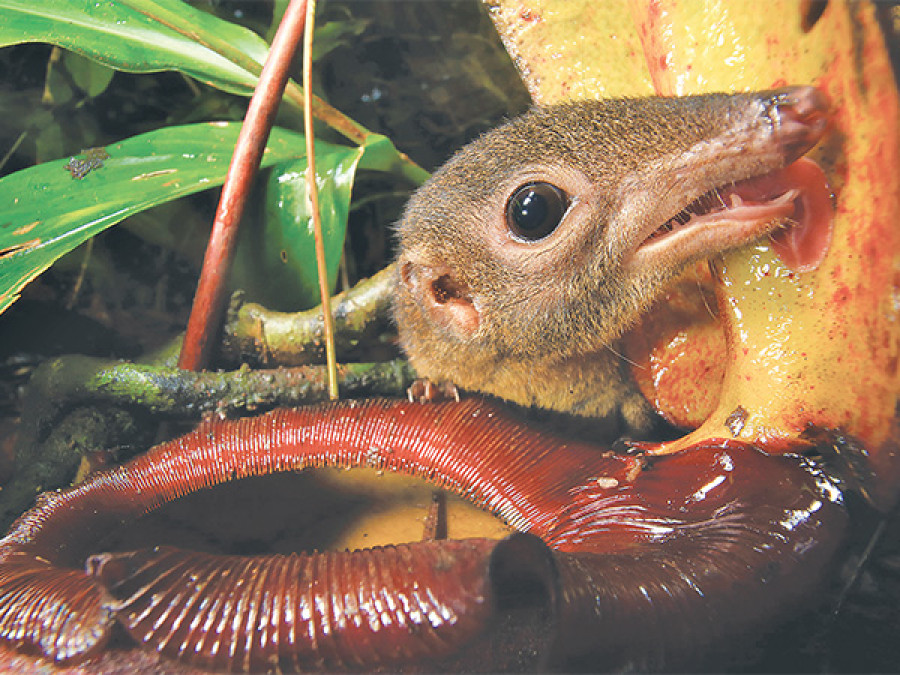Opinion
Shit happens
Animals make use of faeces and urine in unique ways to navigate, impress mates, and mark territory
Maneka Sanjay Gandhi
Dogs go round and round before they urinate and defecate to align themselves with the earth’s magnetic field facing either north
or south.
Ready to mate
Female porcupines are only available for mating for about half a day a year. During this brief time, they hang around males who predictably fight each other till the winner gets the girl. Male porcupines sniff every inch of the female, then stand on its hind legs and hose her down with a massive stream of urine. Once the female has been thoroughly soaked, they are ready to do the deed. If she is not ready, she will scream, shake off the urine and run off. If she is willing then she’ll expose her quill-less underbelly.
Female giraffes emit scents to inform males that they are ready for mating.When a male giraffe takes a liking to a female, he nudges her backside to induce urination. He then takes a mouthful of her urine. If it tastes ‘fertile’, then he begins to officially court her, following her around till she gives in.
To find a mate, the hippo must first advertise his presence and availability. He does this by defecating and urinating and twirling his tail round and round like an airplane propeller, throwing his excrement all over until a female is attracted.
Regaining nutrition
Rabbits produce up to 500 pellets a day, ie, about one every three minutes. Rabbits eat their food twice, once normally and once after they eject it as excreta, to make sure that they get as much as they can out of what they eat. So do capybaras, the largest rodents in the world. The only difference is that they produce two types of poop. The soft, green excrement still has some nutrition and will be eaten again. The harder, darker kind is left to rot.
Mountain goat diets lack only one thing: salt. Like cattle, they will seek out and lick any rock or piece of ground that’s a little salty. Unlike cattle, they look for salt and minerals from human urine and sweat. They will often paw and dig areas on the ground where hikers have urinated or disposed of cooking wastewater and chew unattended clothing.
Tortoises need to survive in the desert. Their main defence is their bladder, which is massive. A desert tortoise can hold over 40 percent of its body weight in its bladder. It stores water for times of drought, as well as urea, uric acid, and nitrogenous wastes. If the tortoise is attacked, it proceeds to unleash the power of its urine all over its attacker.
Sloths are famous for their bizarre bathroom habits. Both two-fingered and three-fingered sloths will only defecate once a week, and they will only do it on the ground. For a sloth, this is a big deal. A sloth’s entire lifestyle is based around avoiding detection and using as little energy as possible. It takes a sloth on a tree an entire month to digest just one leaf, meaning that they don’t have the ability to be very active. Descending from the safety of the canopy to the forest floor not only needs energy, it is also a suicide mission. Sloths are extremely vulnerable to predation when on the ground. These animals can store up to a third of their body weight in faeces.
Marking territory
Groups of animals like horses or deer use faeces to mark their territory. These community toilets act as message boards. A quick sniff can tell an animal how old they were, what sex they were, and if they were head of the pack or at the bottom of the pile.
Baby Komodo dragons and potato beetle babies cover themselves in their own faeces to avoid being eaten. Unlike baby komodos, the beetle’s faeces are actually poisonous to predators.
The hippopotamus defecates on its regular trail to the river and back. Cave rats make urine trails throughout the deep, dark caverns of caves, which tell the rats how to find their way in the dark. The South American degu, a small rodent, uses urine to mark its
passageways. Its urine reflects ultraviolet light, which the degu can see.
Secretary birds use dried zebra dung to build their nests. Millipedes make nests out of their own faeces. Termites mix their excreta with chewed wood to build termite mounds. The turkey vulture squirts excreta on its legs to cool off. Male goats use their urine as perfume. They spray themselves lavishly over their faces, stomachs, and forelegs prior to mating.
Wolves, even the male leaders of the pack, urinate while squatting. However, when they want to mark their territory then they lift a hind leg to urinate on a higher spot. The alpha female usually urinates on a scent post that her breeding partner has just urinated on. All other females in the pack, and young and low-ranking male wolves, will urinate while squatting.
The most amazing is the relationship between the tree shrew and the giant carnivorous pitcher plant. Insect prey in Borneo is scarce. So the largest meat-eating aerial plant in the world no longer eats small animals but small animal faeces. It has evolved into a toilet for the tree shrew. Botanists have discovered that the plant uses tasty nectar to attract tree shrews, and then ensures its pitcher is big enough to collect the feeding mammal’s droppings. A small tree shrew climbs up to lick the concave lid of the ‘toilet plant.’ The inside of this lid is covered with glands that exude huge amounts of nectar.
Busily engaged in slurping down the nectar that lines the plant’s ‘lid’, the tree shrew does his business in the bowl of the pitcher plant. A sweet, liquid-free lunch for the tree shrew and a deposit for the plant which supplies it the nitrogen required.
To join the animal welfare movement contact [email protected], www.peopleforanimalsindia.org




 17.12°C Kathmandu
17.12°C Kathmandu










